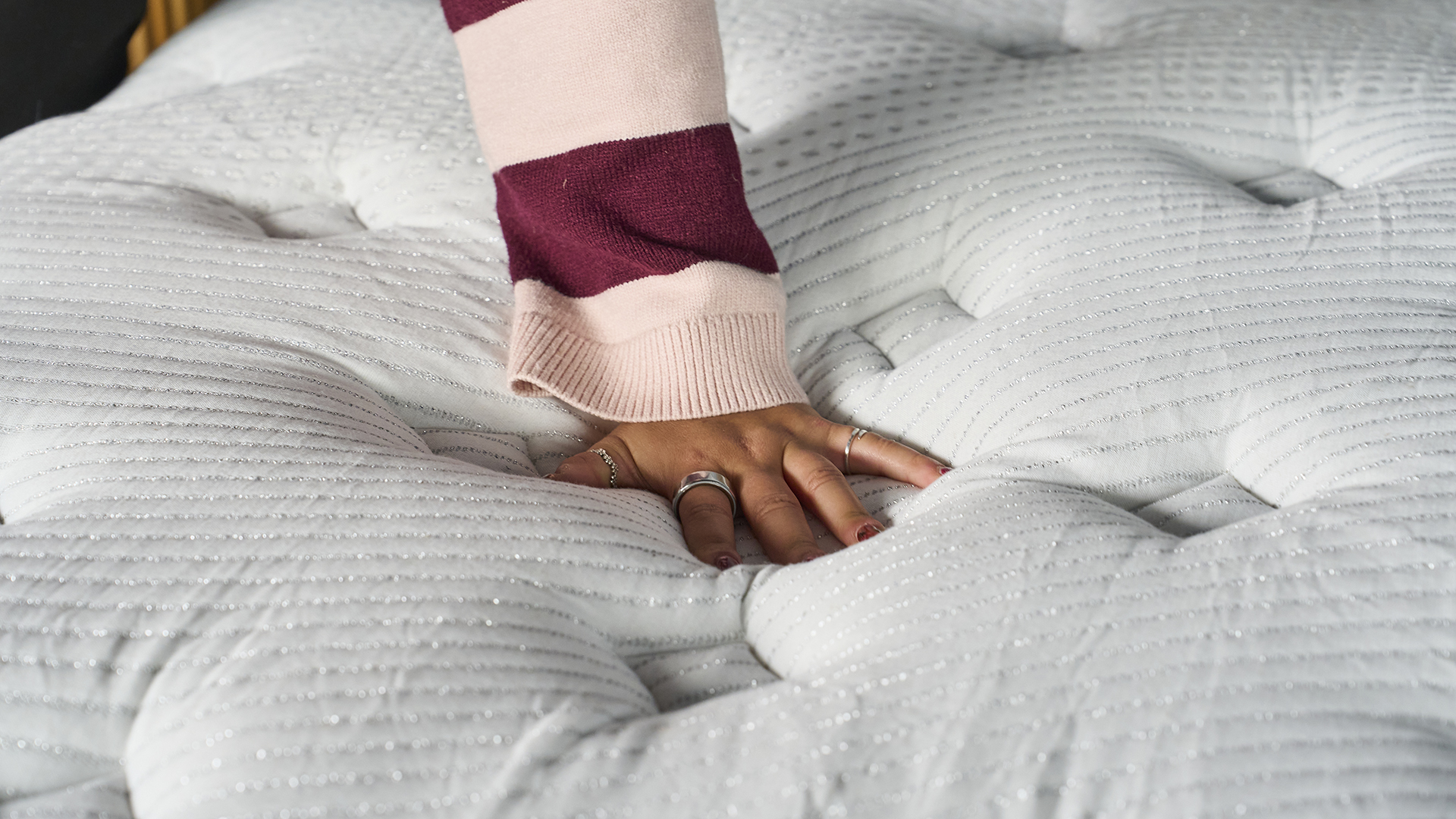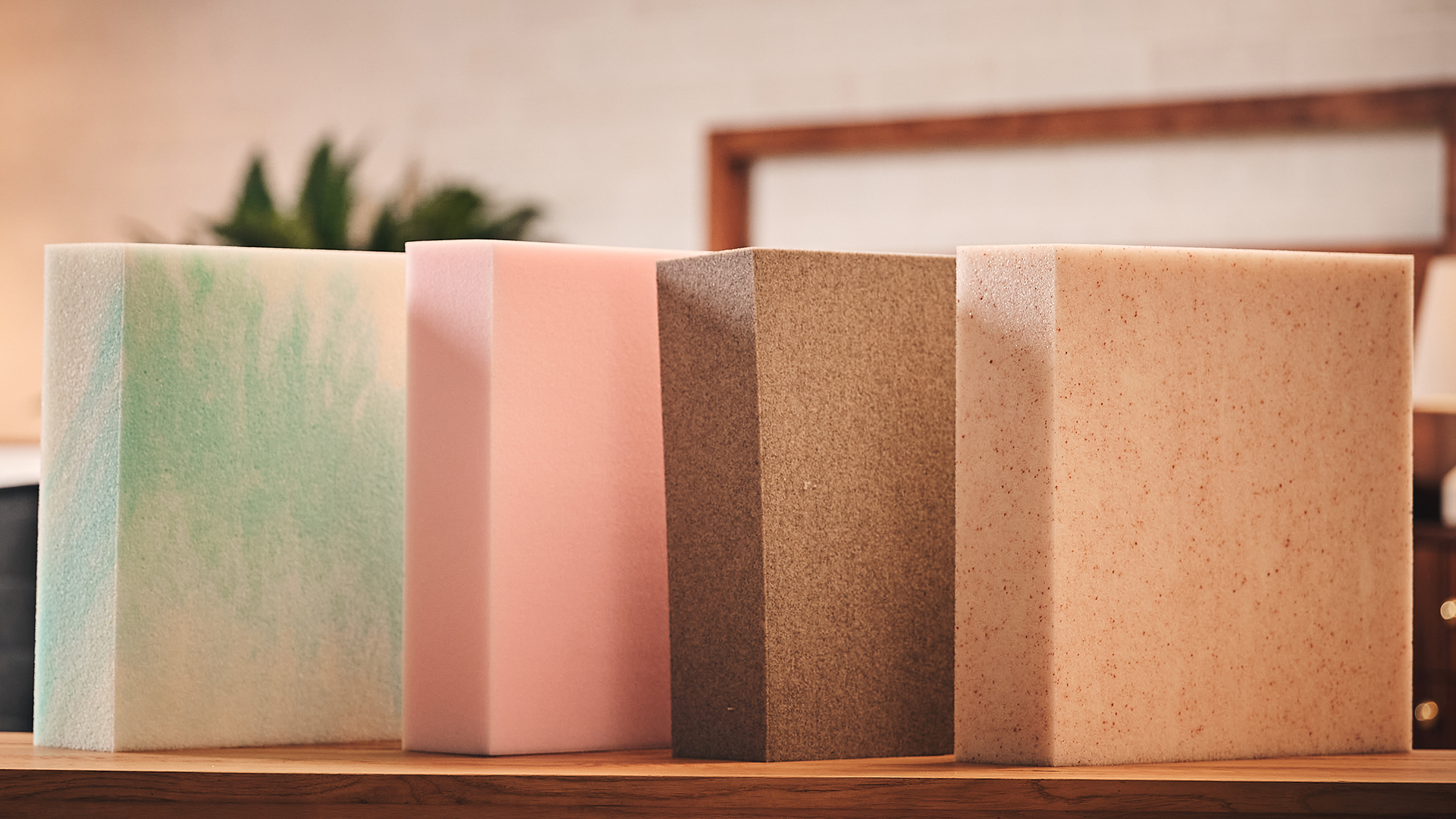Our thermal tests show this specific type of mattress helps you sleep cooler than any other — here's exactly what to look for
Our new mattress data shows the coolest beds have this one feature


Check out our guide to the best cooling mattresses to find a solution to your hot nights.
Many hours of data analysis later, we've just launched our brand new mattress testing methodology here on the Tom's Guide Sleep Team, and retested every inch of our five best mattresses of the year.
Part of this methodology is our refined temperature tests which we use to assess whether promised cooling mattresses can actually help you keep cool at night.
Our new thermal imaging camera test has allowed us to capture much more accurate temperature data, meaning we've reviewed and updated our best cooling mattress guide.
After careful consideration of data and mattress constructions, we've noticed one feature that most of the best performing cooling beds have in common: a hybrid build.
What is a hybrid mattress?
The meeting point between traditional innerspring mattresses and all-foam mattresses, a hybrid mattress combines layers of memory foam with a coil lattice to offer the best of both worlds: cushioning from foams and sturdy support from coils.
In our testing we’ve found the main benefits of a hybrid mattress construction to be increased breathability, responsive sleep surface, robust support and durability. You can find the top of the crop in our best hybrid mattress guide.
Ways a hybrid mattress helps you keep cool
So, we know what a hybrid mattress is and that they tend to stay cool through the night, but how do they achieve this climate control? Let's dig in...
Get instant access to breaking news, the hottest reviews, great deals and helpful tips.
1. More air flows through coils
There are many different types of mattress coils but most of the best quality hybrids are built with pocketed coils. This means the cylindrical metal springs are individually wrapped in fabric and then glued or sewn together to form a layer.
What does this have to do with temperature, you ask? Well, since there are small crevices between the individually-encased coils, air is able to circulate through the centre of the bed; whereas it would get trapped in dense foams.
More free flowing air means heat doesn’t get trapped in the mattress, which equals a cooler sleep surface and better temperature regulation.

Out of the top five mattresses we've tested under our new methodology, two were memory foam: the Nectar Premier mattress and the Siena Signature mattress.
In our temperature tests, these two beds increased by 8.1°F and 9.8°F respectively when we lay on the bed. By comparison, the hybrid Saatva Classic only increased by 6.3°F and the hybrid DreamCloud Classic rose by 7.3°F over the course of 15 minutes.
2. Double the cooling
In the premium hybrid beds we’ve tested, airy coil layers are paired with specialist cooling foams and materials like phase change material (PCM), copper and GlacioTex (more on these below), which means extra cooling power alongside breathable coils.
However, foam beds would need more specialist (read, expensive) cooling technology to combat the heat-trapping nature of foams.
The foam Nectar Premier showed a much slower cooling rate than the hybrid mattresses in our temperature tests. It shed 0.9°F per minute after our tester left the bed. For comparison, the Bear Elite Hybrid — rated as the best cooling mattress of the year — doubled this, throwing out an average 1.82°F degrees per minute.
3. Smaller layers of foam
Foam can trap heat, especially thick layers of it. Dense foam layers absorb and retain body heat, limiting airflow and preventing heat from escaping throughout the night.
However, in a hybrid mattress there tends to be thinner layers of foam and less foam incorporated throughout the bed overall (it makes up part of the mattress rather than the full thing).
By reducing the amount of foam, there’s more room for air circulation within the mattress, which allows heat to dissipate more easily. This design also makes it possible to include more breathable materials — think coils, latex and specialized cooling fabrics — that help regulate temperature. As a result, mattresses with less foam typically feel cooler and more comfortable for hot sleepers.
What to look for in a cooling hybrid mattress
Phase change material

Phase Change Materials (PCM) is a substance that can adsorb and release heat as it changes state from a solid to a liquid state.
When sewn into the top layer of mattresses, it absorbs excess body heat when you get warm during the night, holds it, and then releases back to your body when you cool down.
This active heat regulation makes sure you remain at an optimal temperature for sleeping through the night so you can catch undisturbed ZZZs.
PCM is a popular specialist cooling material used in many top-rated cooling beds including the Bear Elite Hybrid and Brooklyn Bedding Aurora Luxe Hybrid mattress.
GlacioTex cover

A GlacioTex mattress cover can provide a cool-to-the-touch sleep surface. It is made with a blend of polyester, polyethylene and fibers with high thermal conductivity.
These fibers can quickly draw excess heat away from the body and dissipate it through the mattress surface.
The Brooklyn Bedding CopperFlex Pro Hybrid mattress features a GlacioTex cover that is noticeably cool when you lay on it.
Copper or graphite infused foam

Copper and graphite foams have metal filaments infused into them to improve temperature regulation.
These foams utilise the high thermal conductivity of copper and graphite to draw heat away from your sleeping body, and disperse it out of the mattress to prevent heat spots forming. This helps keep your body temperature neutral so you can sleep peacefully.

Follow Tom's Guide on Google News and add us as a preferred source to get our up-to-date news, analysis, and reviews in your feeds.

Eve is a sleep tech product tester and writer at Tom's Guide, covering everything from smart beds and sleep trackers, to sleep earbuds and sunrise alarm clocks. Eve is a PPA-accredited journalist with an MA in Magazine Journalism, and has four years’ experience writing features and news. In her role as Sleep Tech Product Tester and Writer for Tom's Guide, Eve is constantly trying out and reviewing the latest sleep products from brands such as Apple, Garmin, Whoop, Hatch, Sleep Number, Eight Sleep, and Oura. A fitness enthusiast who completed the London Marathon earlier this year, Eve loves exploring the relationship between good sleep, overall health, and physical performance, and how great sleep tech can make that relationship even better.
You must confirm your public display name before commenting
Please logout and then login again, you will then be prompted to enter your display name.
